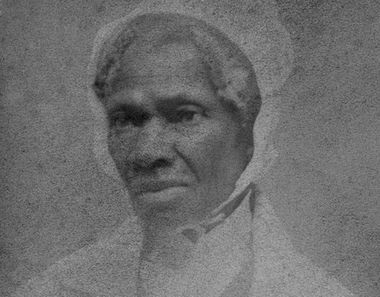
Iconic speeches have often played important parts in world events. Perhaps the most famous in Black history was Martin Luther King’s ‘I have a dream’ speech in Washington DC in 1963. More than a century earlier, another speech was widely publicised in an even more fundamental struggle for African Americans – the campaign to abolish slavery.
The wonderfully named Sojourner Truth focused on the interaction of race and gender in a speech that came to be known by the title ‘Ain’t I a Woman?’ This speech was widely published and quoted in support of the abolition campaign. However, all was not as it seemed.
Sojourner Truth was an African American abolitionist and activist for women’s rights. She was born enslaved, as Isabella Baumfree, in the last years of the eighteenth century. She escaped from her enslavement in 1826, claiming that she had been promised early freedom. An abolitionist paid off her former ‘owner’ to prevent her recapture. She adopted the name under which she became famous when she became a Methodist in the 1840s.

So what of ‘Ain’t I a Woman?’ The very title gives us a clue to the problem. It comes from a later published edition of the speech. In that edition, which was the one that was to become famous and influential, Sojourner’s words were recast into the Southern dialect that people expected from African Americans.
In fact, Sojourner Truth was born in New York and spoke only Dutch in her early years, being enslaved by a family of Dutch settlers.
It is likely that she spoke English with a Dutch accent. She had never even visited the Southern states, so could not have spoken in the way reported in the published speech.
Although it was an effective tool in the struggle for liberation, the published version of the speech itself drew on and propagated racial stereotypes. Apparently, it was felt that the public would not respond to the rather formal and convoluted English in which Sojourner Truth seemingly expressed herself.
Instead, the editor gave people what they expected. This was a caricature of an enslaved African American. The intention was to promote freedom, but it also reinforced stereotypes about Black people being unintelligent and inarticulate, in a way that the bilingual Sojourner Truth most certainly was not.
This is another example of how a famous moment in Black history has, from a very early date, been reshaped to meet an agenda not set by Black people. Black History Month gives us the opportunity to revisit these stories and recover the nuance and complexity that lays underneath the headlines.
